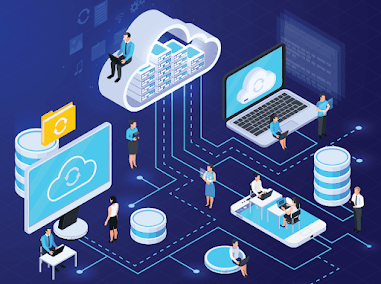Written By Richa Raj
Cloud computing also known as Pall Computing has come a popular technology result for businesses and individualities likewise. It offers multitudinous benefits, similar as scalability, cost savings, and inflexibility, but it also presents challenges that need to be precisely considered. In this composition, we will explore the pros and cons of pall computing and bandy the benefits and challenges of using pall- grounded results in moment's digital world.
Cloud computing allows druggies to pierce computing coffers, similar as storehouse, recycling power, and operations, over the internet. This eliminates the need for physical structure and provides the inflexibility to gauge coffers up or down grounded on demand. One of the significant benefits of pall computing is cost savings. rather of investing in precious tackle and software outspoken, druggies can pay for pall services on a subscription or operation- grounded model, which can be more cost-effective, especially for small and medium- sized businesses.
Another advantage of cloud computing is inflexibility. Cloud- grounded results can be penetrated from anywhere, at any time, as long as there's an internet connection. This allows for remote work, collaboration, and access to coffers on the go. pall computing also enables easy integration with other operations and services, furnishing flawless connectivity and interoperability.
Cloud computing also offers scalability, allowing druggies to fluently acclimate their coffers grounded on their requirements. This is particularly useful for businesses that witness shifting workloads or seasonal demand. Cloud providers can snappily allocate fresh coffers when demanded, and druggies can fluently gauge down during ages of lower demand, reducing costs.
Cloud computing allows druggies to pierce computing coffers, similar as storehouse, recycling power, and operations, over the internet. This eliminates the need for physical structure and provides the inflexibility to gauge coffers up or down grounded on demand. One of the significant benefits of pall computing is cost savings. rather of investing in precious tackle and software outspoken, druggies can pay for pall services on a subscription or operation- grounded model, which can be more cost-effective, especially for small and medium- sized businesses.
Another advantage of cloud computing is inflexibility. Cloud- grounded results can be penetrated from anywhere, at any time, as long as there's an internet connection. This allows for remote work, collaboration, and access to coffers on the go. pall computing also enables easy integration with other operations and services, furnishing flawless connectivity and interoperability.
Cloud computing also offers scalability, allowing druggies to fluently acclimate their coffers grounded on their requirements. This is particularly useful for businesses that witness shifting workloads or seasonal demand. Cloud providers can snappily allocate fresh coffers when demanded, and druggies can fluently gauge down during ages of lower demand, reducing costs.
Still, there are also challenges associated with pall computing. One significant concern is data security and sequestration. pall providers store data on their waiters, which may be located in different geographic locales, raising enterprises about data sequestration, data sovereignty, and compliance with regulations, similar as the General Data Protection Regulation( GDPR). druggies must precisely estimate the security measures and programs of pall providers to insure the protection of their sensitive data.
Trustability and vacuity are also implicit challenges of pall computing. Since pall services are penetrated over the internet, they're dependent on internet connectivity. However, it may impact the vacuity and trustability of pall services, If there's a dislocation in internet service. druggies must consider the service position agreements( SLAs) offered by pall providers and have contingency plans in place to alleviate implicit dislocations.
Another consideration is seller cinch- heft. Once druggies borrow a pall provider and resettle their operations and data to the pall, it may be grueling to switch to another provider or move back on- demesne. This can limit inflexibility and increase reliance on a specific provider. druggies should precisely assess the portability and interoperability of their operations and data in the pall to avoid seller cinch- heft.
In conclusion, pall computing offers numerous benefits, including cost savings, inflexibility, and scalability. still, it also presents challenges, similar as data security, trustability, and seller cinch- heft, that need to be precisely considered. Businesses and individualities must weigh the pros and cons of pall computing and make informed opinions grounded on their specific requirements and conditions in moment's digital world.


